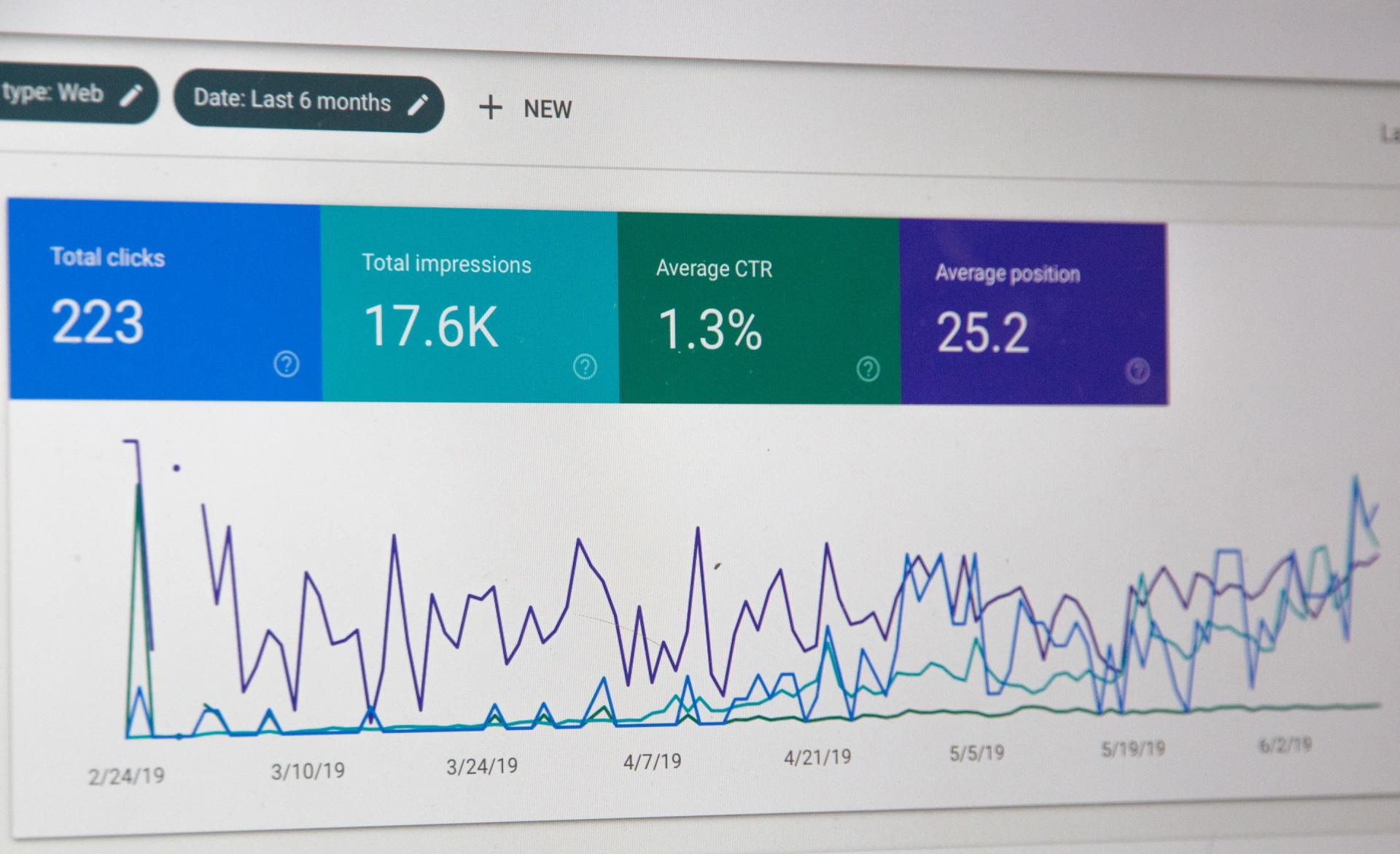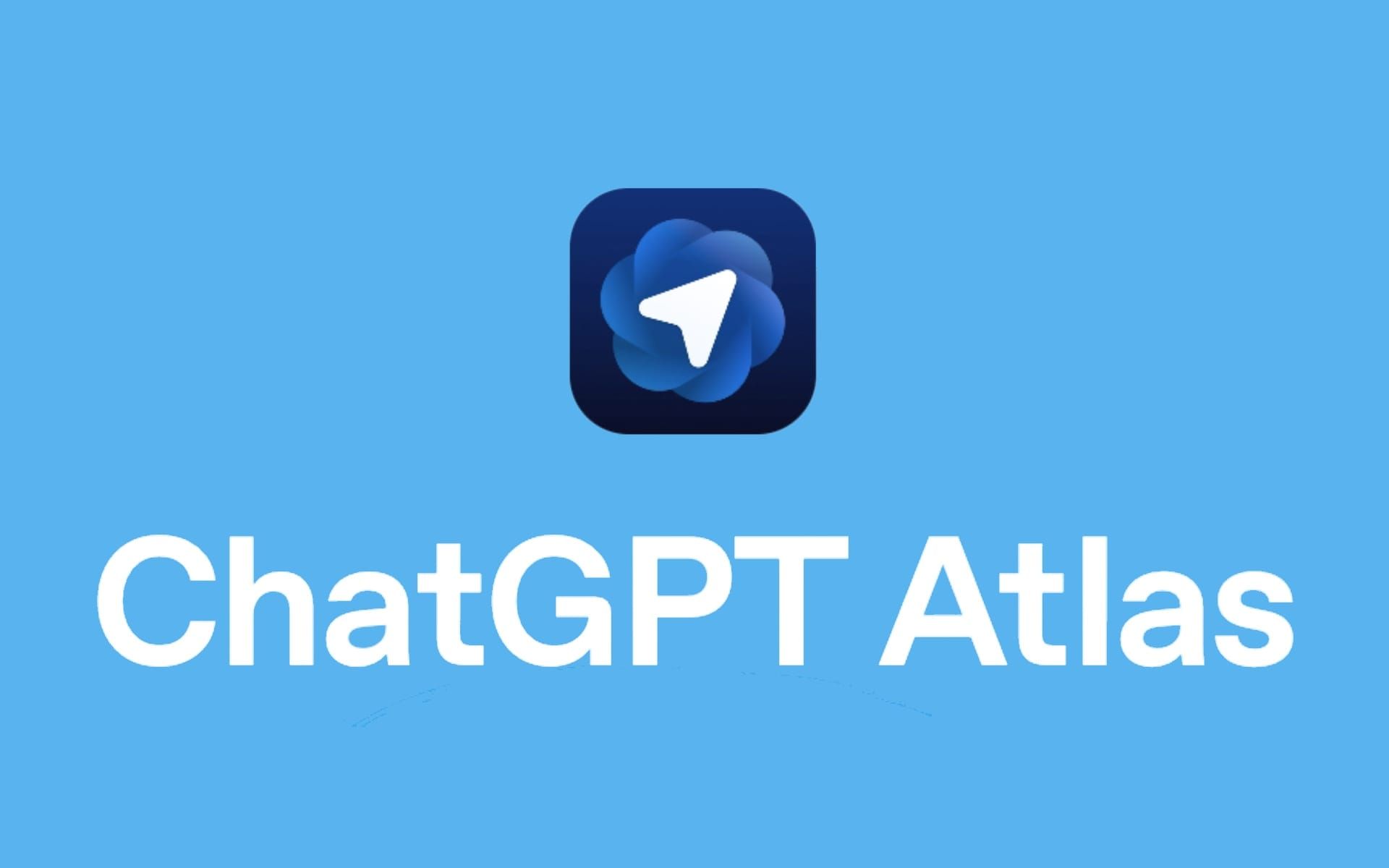Stop Hiding: A Real Person's Guide to Getting Your Business Found on Google
A practical, no fluff guide to the three things that actually matter for getting seen on Google.
Picture this: Sarah spent two years perfecting her handmade soap recipes, crafting a website on Squarespace, and writing product descriptions that she is proud of. Her soaps smell like something from heaven, her packaging could grace design magazine covers, and her customer service would make Nordstrom jealous. There's just one tiny problem her website gets about as much traffic as a country road at 3 AM. When she Googles her business name, she has to scroll past three pages of random soap dispensers and a 1990s band called "Sudsy Dreams" just to find herself.
Sound familiar?
Here's the brutal truth: Having an invisible website in 2025 is like opening the world's most amazing restaurant in your basement with no signs, no address, and telling people to "just figure it out." You can have the best product, the most beautiful branding, and the heart of an entrepreneur, but if Google doesn't know you exist, you're basically throwing a party and forgetting to send invitations.
I've watched too many brilliant business owners people who could run circles around Fortune 500 companies when it comes to their craft get completely defeated by the mysterious black box that is search engine optimization. They'll spend hours agonizing over whether their logo should be 2% more blue, but when it comes to SEO, they throw their hands up and mutter something about "algorithms" like they're discussing ancient sorcery.
But here's what the $500 an hour consultants don't want you to know: Getting found on Google isn't rocket science. It's not some secret club that requires a computer science degree and a working knowledge of HTML. Most of the "experts" are just better at speaking in acronyms and making simple concepts sound impossibly complex.
This guide? It's different. We're going to talk about SEO like normal humans. No mystical jargon about "domain authority" or "schema markup" (okay, maybe a little, but I'll actually explain what that stuff means). Instead, we're going to focus on the practical, no nonsense strategies that actually move the needle the ones that help real businesses get found by real customers who are ready to buy real stuff.
Because your business deserves better than
digital witness protection.
Rule #1: If You Do Nothing Else, Do This
Let me tell you about two bakeries. Sweet Dreams Bakery and Flour Power both make incredible croissants, both opened within a month of each other on opposite sides of town, and both have owners who wake up at 4 AM because they're crazy passionate about what they do.
Here's where their stories diverge: It's Saturday morning, and Jessica is desperately searching "bakery near me" because she promised to bring pastries to her book club in two hours. Google shows both businesses in the results. Sweet Dreams has a sad, lonely listing just a name, address, and phone number staring back at her like a digital ghost town. No photos, no hours listed, and definitely no indication they're even open on weekends.
Flour Power's listing? It's practically throwing a parade. There are gorgeous photos of golden croissants that make Jessica's mouth water, clear hours showing they're open until 2 PM today, recent posts about their weekend special (lavender honey scones!), and 47 five star reviews from people raving about the owner's sourdough. There's even a photo of the bright, welcoming interior and the owner's smiling face behind the counter.
Guess where Jessica's going?
This isn't a story about better croissants it's about the brutal reality of Google Business Profiles. Sweet Dreams might have the flakiest, most heavenly pastries in the state, but they're essentially invisible to everyone except the people who stumble across their physical storefront.
Your
Google Business Profile isn't just a listing it's your digital welcome mat, your first impression, and often your only chance to convince someone to choose you over your competitor. Think of it as the world's most important free billboard, and Google is letting you use it for nothing.
Here's How to Actually Use This Free Marketing Superpower
First, claim your profile (and yes, you might already have one you don't know about). Go to business.google.com, search for your business, and if it exists, claim it. If it doesn't, create it. Google has probably already made a basic listing for you based on other online mentions—they're helpful like that, but also terrible at getting details right.
Upload photos like your business depends on it (because it does). Don't just throw up one sad exterior shot from 2019. Show your products, your space, your team, your process. People eat with their eyes first, and they shop with their eyes even more. That gorgeous latte art? Upload it. Your organized workshop? Upload it. Your happy customers using your product? Upload it. Seriously, Google lets you add unlimited photos use that gift.
Keep your information obsessively up to date. Your hours, phone number, website, services all of it. Nothing kills trust faster than showing up to a business that's closed when Google said it was open. And if you change your hours for holidays or special events, update it immediately.
Use posts like you actually want customers. Google lets you post updates, offers, events, and news directly to your profile. Think of these as free mini advertisements that show up when people search for you. Got a sale this week? Post about it. New product launch? Post about it. Just made an amazing custom order you're proud of? Post about it with photos. These posts expire after seven days, so you need to stay active. Seriously, don't just set it and forget it.
Answer questions like you're talking to your best customer/client. People can ask questions directly on your profile, and other potential customers will see your responses. This is free customer service and marketing rolled into one. Answer quickly, be helpful, and use it as a chance to showcase your expertise and personality.
The businesses that treat their Google Profile like a living, breathing part of their marketing strategy are the ones that show up first, get the most calls, and steal customers from competitors who think "online marketing" is too complicated.
Your Google Business Profile is the lowest hanging fruit in the entire digital marketing orchard. Ignore it at your own peril.
Your Website Is More Than Just a Pretty Face
Your website isn't just a
digital business card that looks good and sits there collecting virtual dust. It's your tireless 24/7 salesperson, working weekends, holidays, and 3 AM shifts without complaining or asking for a raise. It's the digital handshake that happens before customers ever meet you, and it needs to work as hard as you do.
But here's the thing having a beautiful website that Google can't understand is like having a brilliant salesperson who only speaks ancient Latin. Sure, they're eloquent and impressive, but they're not exactly connecting with your target market.
Getting Inside Your Customer's Brain
Before we dive into the technical stuff, let's talk about keywords. And no, I don't mean those robotic, awkward phrases that make you sound like a malfunctioning chatbot from 2008. I'm talking about understanding the weird, wonderful, and wonderfully specific things your actual customers type into Google at 11 PM when they can't sleep.
Your potential customers aren't searching for "premium automotive maintenance services." They're typing "why does my car make that clicking noise when I turn left" or "best oil change near me Sunday" or "how often should I really change my air filter honestly."
Get inside their heads. What problems are they trying to solve? What questions keep them up at night? What would they ask you if they were standing in front of you right now? Those real, human phrases? Those are your keywords.
Making Your Website Speak Google's Language
Think of your website like a well organized book. Every good book has
three essential elements that help people decide whether to pick it up:
- The title tells you exactly what you're getting into. On your website, this is your title tag the clickable headline that shows up in Google results. Make it clear, make it compelling, and for the love of all that's holy, make it accurately describe what's actually on that page.
- The back cover summary gives you the juicy details that help you decide if this book is worth your time. That's your meta description the little snippet of text that appears under your title in search results. This is your elevator pitch in 155 characters or less. Don't waste it on generic corporate speak like "We provide quality services." Tell people exactly what they'll get and why they should care.
- Chapter headings break up the content and help you navigate to what you need. These are your header tags (H1, H2, H3) they organize your content and help both people and Google understand what each section is about.
Content That Actually Helps People
Here's where most businesses go completely off the rails. They think SEO means cramming their keywords into every sentence until their content reads like it was written by a robot having a breakdown. "Our premium dog grooming services provide dog grooming for dogs who need dog grooming services for their dogs." Stop. Just stop.
Google got smart. Like, scary smart. It can tell the difference between helpful content and keyword stuffed garbage faster than you can say "search engine optimization." The algorithm rewards websites that actually answer people's questions, solve their problems, and provide genuine value.
Instead of trying to trick Google, try helping your customers. Write the blog post (like this one) that explains why their houseplant keeps dying. Create the FAQ page (valued by Ai & LLM's) that answers the questions you get asked seventeen times a day. Make the service page that clearly explains what's included, what it costs, and what happens next.
Be useful. Be clear. Be human.
When you focus on creating content that genuinely helps people, something magical happens: they stay on your site longer, they share your content, they link to your pages, and they turn into customers. Google notices all of this activity and thinks, "Hey, this website must be pretty valuable. Let's show it to more people."
It's not about gaming the system. It's about being so helpful that the system wants to promote you.
Building Your Digital Neighborhood
Remember that old saying about success being "who you know, not what you know"? Well, it turns out that's true online too, just with a digital twist.
Google doesn't just care about what you say about yourself it cares about what
everyone else says about you. Think about it: if you were looking for a good dentist, would you trust the guy who stands on street corners shouting "I'm the best dentist in town!" or would you rather hear from five different friends who all had great experiences with the same practice?
Google thinks like your skeptical friend. It wants to see proof that you're a legitimate, respected part of your community both online and off. This is what SEO nerds call "off page optimization," but I like to think of it as building your digital neighborhood.
Getting Those Golden Referrals (AKA Backlinks)
When another website links to yours, it's like getting a professional referral. The website is essentially telling Google, "Hey, these folks know what they're talking about. You should check them out."
But here's the kicker not all referrals are created equal. A mention from the local newspaper's website? That's like getting a referral from the mayor. A link from your cousin's abandoned blog about hamster care? That's more like getting vouched for by the guy who wears pajamas to the grocery store. Technically it counts, but it doesn't exactly scream "credible business professional."
So how do you get these digital referrals without feeling like you're begging for attention at a high school reunion?
Start local. Write a guest article for your local business journal. Sponsor a community event and make sure they mention you on their website. Partner with other businesses for cross promotions. Join your local chamber of commerce (most have websites that list members). Offer to be interviewed about trends in your industry. The goal isn't to manipulate it's to be genuinely involved in your community, both online and off.
Getting Your Name Out There (The Right Way)
Here's something that sounds boring but is actually crucial: making sure your business name, address, and phone number are exactly the same everywhere they appear online. We call this NAP consistency, and it's like making sure everyone in town knows where to find you.
If your Google Business Profile says you're on "Main Street" but Yelp has you on "Main St." and your website says "123 Main Street Suite A" while the Better Business Bureau lists "123 Main St. #A"—well, Google starts getting confused. And when Google gets confused, it gets cranky. When Google gets cranky, your rankings suffer.
Think of citations like your business getting mentioned in the local phone book, except now there are hundreds of digital phone books (Yelp, Yellow Pages, Facebook, industry directories, local business listings). The more places that mention your business with consistent information, the more Google trusts that you're a real, established business and not some fly by night operation running out of someone's garage.
The Review Game (And Why It's Not Actually a Game)
Let's talk about the elephant in the room: customer reviews. They're not just nice ego boosts or sources of occasional heartburn they're one of Google's (and Yelp's) biggest trust signals. Reviews are like having a bunch of customers standing outside your business with megaphones, telling everyone what their experience was like.
Here's what most businesses get wrong about reviews: they treat them like something that just happens to them, rather than something they can influence. I'm not talking about buying fake reviews or begging Aunt Martha to write glowing testimonials (Google can spot that stuff from orbit). I'm talking about actually asking your happy customers to share their experience.
You know that moment when a customer tells you how much they love working with you? That's when you say, "Thank you so much! Would you mind sharing that on Google? It really helps other people find us." Most people are happy to help they just need to be asked.
And when you get a less than stellar review? Don't panic and don't hide. Respond professionally, show that you care about making things right, and demonstrate to future customers that you stand behind your work. Sometimes a thoughtful response to a negative review is more powerful than ten generic five star ones.
The bottom line: Google wants to see that real people in your community know, trust, and recommend your business. The more evidence you can provide of that, the more Google will trust you too. It's all about building genuine relationships, one digital handshake at a time.
Your Digital Foundation Starts Today
Here's the beautiful truth about getting found on Google: it's not about mastering some impossible technical wizardry or cracking a secret code that only marketing agencies understand. It's about building a solid foundation with three interconnected pillars that work together to tell your story online.
Your
Google Business Profile acts as your digital storefront, making that crucial first impression and showing up when customers are actively looking for what you offer. Your website becomes the helpful resource that answers their questions and demonstrates your expertise, while your off page reputation those backlinks, citations, and reviews serves as the community endorsement that proves you're the real deal. When these three elements work in harmony, they create a digital presence that doesn't just exist online, but actually thrives there.
Remember, this is a marathon, not a sprint. Google didn't learn to trust the businesses ranking on page one overnight, and your climb won't happen overnight either. But every optimized photo, every helpful blog post, every satisfied customer who leaves a review is a step forward. The businesses that consistently show up, consistently help people, and consistently build genuine relationships are the ones that win in the long run.
So here's your homework: pick just one thing from this guide and do it today. Claim your Google Business Profile. Upload five new photos. Write one helpful blog post. Ask one happy customer for a review. The smallest action is infinitely better than the grandest plan that never gets started.
And hey, if you'd rather just focus on running your business while someone else handles the digital marketing maze, we totally get it. This stuff is our profession at Salt Creative, and we love helping business owners turn their websites from digital hiding places into customer magnets. Feel free to contact us from the form below titled "Get My Free Proposal!."
Frequently Asked Questions About Getting Your Business Found on Google
1. How do I get my business found on Google quickly?
Start by claiming and optimizing your Google Business Profile. Add accurate business information, upload high quality photos, keep your hours updated, and encourage reviews. This is the fastest way to start showing up when customers search for businesses like yours.
2. Do I need a website if I already have a Google Business Profile?
Yes. A profile helps people find you, but your website gives customers the details they need to trust and choose you. It’s your 24/7 salesperson, answering questions, showcasing your services, and proving you’re legitimate. Google also favors businesses with strong, useful websites.
3. What are the three most important things for SEO if I’m just starting out?
- A fully optimized Google Business Profile
- A website with clear, helpful content that matches what customers search for
- Consistent reviews, backlinks, and citations from other trusted sites
4. How long does it take to get my business on the first page of Google?
It depends on your competition, location, and consistency. Some businesses see results in a few weeks, while others take several months. Think of SEO as a long term investment rather than an overnight fix.
5. Do I need to hire an SEO agency to get results?
Not necessarily. Many business owners can get found on Google by handling the basics—updating their profile, creating helpful content, and asking for reviews. But if you want to grow faster or avoid the learning curve, partnering with an agency like Salt Creative can save time and maximize results.
6. How do I know what keywords my customers are searching for?
Pay attention to the actual questions customers ask you. Use free tools like Google’s “People Also Ask” or autocomplete suggestions to see real search phrases. Focus on natural, problem solving keywords instead of stiff industry jargon.
7. What are backlinks and do I really need them?
Backlinks are links from other websites pointing to yours. They act like referrals, telling Google your business is trustworthy. Not all backlinks are equal—local newspapers, chambers of commerce, and respected blogs are valuable. Random low quality links won’t help.
8. How important are customer reviews for getting found on Google?
Very important. Reviews are one of the strongest trust signals Google uses. The more quality, authentic reviews you have, the more likely you are to appear higher in search results. Always respond to reviews—good or bad—to show professionalism.
9. What happens if my business information isn’t consistent across the web?
Inconsistent business names, addresses, or phone numbers confuse Google and hurt your rankings. Make sure your details match everywhere they appear—from your website to directories like Yelp, Facebook, and the Better Business Bureau.
10. What’s the easiest first step I can take today?
Claim your Google Business Profile at business.google.com










